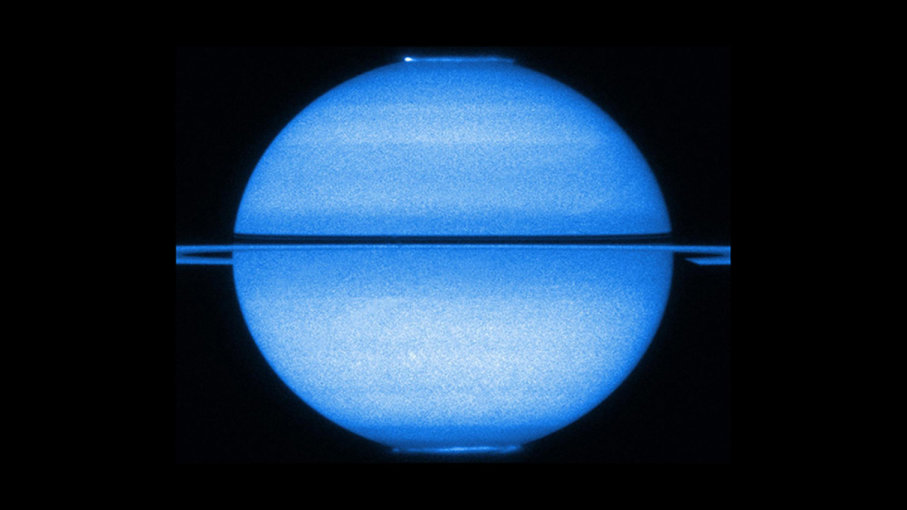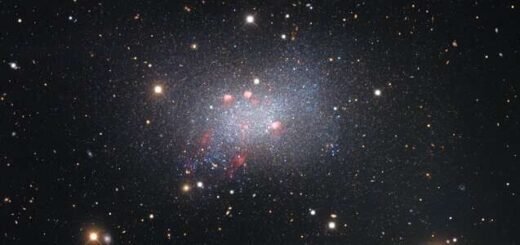Why Are Planets Almost Spherical?

It’s something we kind of take for granted. Roses are red, and planets are spherical. That’s just the way things are, right? After all, building model solar systems would be way more challenging if, instead of using little foam balls, we had to make a bunch of icosahedron-shaped planet models.
But have you ever wondered why the planets look like this? Why are they basically spherical and not, say, cylindrical or cube-shaped?
We should kick off this discussion by calling a spade a spade. None of the planets in our solar system are perfect spheres, nor for that matter is our sun. All those bodies could more accurately be described as “oblate spheroids.” Objects with this shape bulge slightly around the middle. To borrow an analogy from the astronomer Phil Plait, they look like a basketball that someone is sitting on.
Put more technically, in a celestial body with an oblate spheroid shape, the polar circumference will be smaller than the equatorial one. So here on Earth, if you were to travel from the North Pole to the South Pole and back, you’d have walked a grand total of 24,812 miles (39,931 kilometers). On the other hand, a complete trip around the equator would be a bit longer. That’s because the circumference of Earth’s equator is 24,900 miles (40,070 kilometers). As such, when you stand at sea level on the equator, you’re farther away from the center of our planet than you would be at either pole.
On some other planets, this bulge is even more pronounced. Just look at Jupiter. Earth is only 0.3 percent wider at the equator than it is from pole to pole. But Jupiter’s measurements showcase a much bigger disparity. Indeed, astronomers have found that this plus-sized planet is a full 7 percent wider at its equator than it is between the poles.
The oblate spheroid shape is the result of two main factors: gravity and rotation. Troy Carpenter, director of Washington State’s Goldendale Observatory, recently discussed the matter with us in an email exchange. “Everything which has mass experiences gravity, and gravity attempts to crush an object inward in all directions,” Carpenter explains.
That’s because all objects experience self-gravity, a force which pulls their atoms toward a common center. As the mass of an object increases, so too does its self-gravitational pull. After it exceeds a certain mass, the pull gets overpowering to the point where the object collapses onto itself and becomes spherical. Little items — like, say, a banana or a lug wrench — can resist this fate because their self-gravity is relatively weak, allowing them to retain non-spheroid shapes. However, in planets, suns and other truly massive bodies, the force is so strong that they can’t avoid being distorted into spheroids.
“But gravity is not the whole story,” says Carpenter. While gravity conspires to render the planets spherical, the speed of their rotations is simultaneously trying to flatten them. The faster a celestial body spins, the more disproportionate its equatorial bulge gets. “This is why there are no perfect spheres in our solar system … only oblate spheroids,” Carpenter tells us. “The sun is almost a perfect sphere, due to its immense gravity and relatively slow rotation rate of 25 days. A significant percentage of stars in the sky rotate much faster and bulge noticeably at their equators.”
One such star is Altair. Located just 16.8 light-years away from our home planet, it’s among the brightest objects in the night sky. Altair is also notable for spinning very, very rapidly and completes a full rotation on its axis every 10.4 earth hours. Accordingly, astronomers estimate that Altair is at least 14 percent wider at the equator than it is from pole to pole. Rotational speed also explains Jupiter’s bulge. After all, a day on this gas giant is a brisk 9.9 earth hours long.
Other forces act upon the stars and planets as well, altering their shapes. Although Earth is an oblate spheroid, it certainly isn’t a perfect one. The gravitational pull of the sun and moon both influence the planet’s shape to a degree. For that matter, so do Earth’s own plate tectonics. Consequently, the mass of our home world isn’t evenly distributed — in fact, it’s rather lumpy.
Still, it looks a good deal rounder than Jupiter (and Saturn). In turn, the planets in our universe appear way more spherical than some of their moons do. Mars, for instance, has two small satellites, neither of which has the self-gravity to be pulled into an oblate spheroid. Instead, their appearance is often described as potato-shaped.
In conclusion, we’ll say this much for our home planet: It may not be flawless, but at least the place is fairly well-rounded.



 Creators of mankind
Creators of mankind Description of “Tall white aliens”
Description of “Tall white aliens” Where they came from?
Where they came from? About hostile civilizations
About hostile civilizations The war for the Earth
The war for the Earth “Tall white aliens” about eternal life
“Tall white aliens” about eternal life Video: “Nordic aliens”
Video: “Nordic aliens” Aliens
Aliens Alien encounters
Alien encounters The aliens base
The aliens base UFO
UFO Technology UFO
Technology UFO Underground civilization
Underground civilization Ancient alien artifacts
Ancient alien artifacts Military and UFO
Military and UFO Mysteries and hypotheses
Mysteries and hypotheses Scientific facts
Scientific facts


















